#Fuzz Octave Tremolo
Text
Stone Deaf FX Rise & Shine - Fuzz Octave Tremolo / Vibrato
Stone Deaf FX ‘Rise & Shine’ Octave-Up Fuzz” In a groundbreaking move, Stone Deaf FX has re-entered the realm of digitally controlled analog pedals with its latest innovation, the ‘Rise & Shine’ octave-up fuzz pedal. This cutting-edge device is being hailed as a perfect marriage of vintage soundscapes and modern technology, offering musicians a myriad of new sonic landscapes to explore.
Rise &…
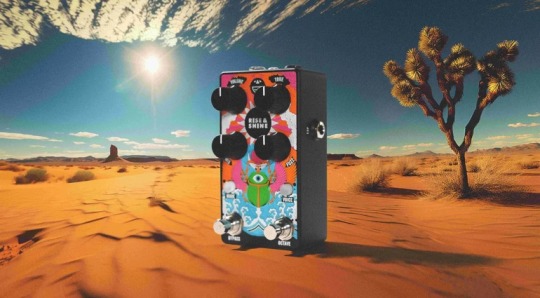
View On WordPress
#fuzz#Fuzz Octave Tremolo#Instagarm#Instagram#pedal#QOTSA#Queens of the Stone Age#Rise & Shine#stompbox#Stone Deaf FX#Stone Deaf FX Rise & Shine#StoneDeafFX#StoneDeafFX Rise & Shine#Tremolo#UK#video#YouTube
0 notes
Text
youtube
2 or 3-In-1 pedals usually amaze and astonish us, and today's creation is no different...the Rise & Shine from Stone Deaf combines Fuzz, Octave and Tremolo, producing sounds you have only dreamed of, with more options than you'll know what to do with!! Our full demo is out now over on YouTube, please head over to check it out, and subscribe while you're there - Cheers!!
#pedaloftheday#stonedeaf#riseandshine#fuzz#fuzzpedal#fuzzpedals#Octave#octavepedal#tremolo#tremolopedal#guitarpedal#guitarpedals#effectspedals#guitar#effects#pedals#knowyourtone#pedalsandeffects#guitareffects#pedalboard#guitarist#Youtube
2 notes
·
View notes
Text
Last week's top 20 videos (2023, week 27)
Top 20 videos last week (July 2-8)
Dr. Robert 'Unknown Pleasures' Pedal - Limited Edition | Official Video (by Aclam Products for Guitar)
10 Years of Bliss ? A Retrospective (by Chase Bliss Audio)
Understanding Guitar Effects Episode 7: Tremolo (by StompboxTV)
Vibroverb Cesar Diaz - Pushed using the Tone Of The Gods Pedal (by JD Analog)
Doom Metal Pedals: EHX OpAmp Big Muff (by Fuzzlord Effects)
T-Rex Binson Echorec (Demo Video) (by T-Rex Engineering)
Beetronics Octahive V2 (by AndyDemos)
50 Year Old Heathkit Fuzz Pedal!!! (by Frantone Electronics)
??? ?????? Zoom 707 ? (by Chas Stompboxes)
Where should YOU spend your money? TC vs UA vs Strymon vs Walrus Audio (by EytschPi42)
Walrus Audio High Gain Comparisons (by Walrus Audio)
The most POWERFUL OCTAVER ever created! (by BassTheWorld)
Morley Chorus / Flanger Tel Ray CFL (by Argie Amps)
Good Isn't Always Super Expensive... | TC Electronic Jims 45, DC30 and Combo Deluxe | Thomann (by Thomann)
Analog Alien Rumble Seat Pedal - Quick demo. (by Analog Alien)
L'histoire de BEETRONICS et de son fondateur (by Tone Factory)
Limited Old Hag Fuzz/Oscillator (Rock Am Palast support) (by Occvlt Pedals)
Boss CE-1, CE-2, CE-3, CE-5 Back to Back #guitar #pedals #choruspedal #bosspedals (by Jason Ayala Spare)
Can The HX Stomp Do Everything? (LINE 6) | Working Class Music (by Working Class Music)
Dual Control + Ableton Live Looper (by VZtec)
Overviews of the previous weeks: https://www.effectsdatabase.com/video/weekly
from Effects Database https://bit.ly/46CJsoe
3 notes
·
View notes
Text
Positive grid bias desktop crack windows

Positive grid bias desktop crack windows full#
Positive grid bias desktop crack windows windows#
A huge collection of newly developed, high-definition pedal and rack effects is included: Noise gate, boosters, overdrive, distortion, fuzz, equalizers, tremolo, phaser, flanger, chorus, octaver, compressors, delays and spring and plate reverbs-everything a guitar player needs for massive tone, with all the flavor of both modern and vintage stomp boxes. Recent breakthroughs in technology, particularly with mobile devices' chip sets, allowed Positive Grid to approach engineering BIAS FX with a no-compromise mindset to produce the best possible sound quality. BIAS FX ups the ante regarding Tone Quality significantly. Seamless BIAS amps integration, dual amps, dual signal chains, and thousands of ultra-high definition multi-effects combinations are instantly downloadable from ToneCloud®, the company's proprietary social network for musicians.
Positive grid bias desktop crack windows full#
All in a visually appealing, easy to navigate Pedalboard-/ Rig-Layout with various output options for the use in conjunction with traditional guitar amps, power amps with guitar cabinets or full range systems and of course no hassle, superb tone direct recording. BIAS FX is utilizing the amazing processing power of today's mobile and desktop computers to provide the next level in pro-grade amp tone and stunning effects.
Positive grid bias desktop crack windows windows#
Positive Grid/ San Diego, Apr 28th 2015 (ictw) - Positive Grid, creator of the highly acclaimed and popular BIAS Amp guitar-amp modeler and designer, today announced the release of BIAS FX: the first ever cross-platform guitar multi-effects and guitar amp system that gives musicians the most advanced and best guitar sounds for Mac, Windows and iOS.

0 notes
Text
Positive grid bias fx professional win torrent

POSITIVE GRID BIAS FX PROFESSIONAL WIN TORRENT CRACKED
POSITIVE GRID BIAS FX PROFESSIONAL WIN TORRENT MAC OS X
POSITIVE GRID BIAS FX PROFESSIONAL WIN TORRENT FULL
POSITIVE GRID BIAS FX PROFESSIONAL WIN TORRENT SOFTWARE
POSITIVE GRID BIAS FX PROFESSIONAL WIN TORRENT FULL
It is full offline installer standalone setup of Positive Grid BIAS FX Professional 1.5.5 crack for 32/64.
POSITIVE GRID BIAS FX PROFESSIONAL WIN TORRENT MAC OS X
BIAS FX 2 may not match Fixed BIAS FX 2 freezes on Mac OS X 10.11 Delay pedal. Positive Grid BIAS FX Elite Crack (Win) Torrent With Complete Library. BIAS FX Crack includes latest and updated tools for editing music with modern. Positive Grid BIAS FX Professional 1.5.5 freeload Latest Version for Windows. BIAS FX 2 Crack Torrent Win/Mac freeload 2021.
POSITIVE GRID BIAS FX PROFESSIONAL WIN TORRENT CRACKED
Best source of cracked VST torrents and audio samples. Laniakea Sounds – Melodic Deep House Vol. Positive Grid Bias FX 2 Elite (Win) - Download it now from our website for FREE.Cymatics – The Ultimate Lofi Collection (MIDI, WAV, SERUM, MASSIVE, SYLENTH1) 24 views per day.Vandalism – Shocking Arabic Trap For Sylenth1 (SYNTH PRESET, MIDI) 25 views per day.
POSITIVE GRID BIAS FX PROFESSIONAL WIN TORRENT SOFTWARE
TBProAudio Plugins Pack 2017.05.31 Incl Cracked and Keygen-R2R Tracktion Software BioTek v1.5.8 Incl Patched and Keygen-R2R Tracktion Software. 3 by Gill Chang (WAV, SERUM, SYLENTH1) 30 views per day Positive Grid BIAS FX v1.5.5 Incl Keygen-R2R Positive Grid Pro.
789ten – The Bass Modulators Producer Pack V.2 (MIDI, WAV, SPIRE, SYLENTH1, TUTORIAL, STUDIO ONE) 32 views per day.
Product Comparison & System Requirement for BIAS FX 2. Complete Guide from Downloading BIAS FX 2 to Getting a Sound. BIAS FX 2 Blocks the Audio/Sound from other Softwares.
Audentity Records – Future Soul Music (MIDI, WAV, MASSIVE, SYLENTH1, SERUM) 48 views per day Prevent Bias FX 2 from logging out (Mac) Find User Presets in GarageBand.
System requirements: Windows 7 (SP1) or Windows 8ĤGB of RAM minimal, 8GB or more recommendedġ.5GHz Dual core processor minimal, 2.0GHz Dual core or more recommended STANDALONE, VST, AAX x32 圆4 VST Torrent - VST Crack - Free VST Plugins - Torrent. Fredrick Days on LINK Positive Grid Bias Fx Keygen Torrent. Positive Grid continues to work with world-wide artists, producers, and engineers to create a massive and ever-growing library of virtual pedalboards and rigs for BIAS FX. Positive Grid BIAS AMP 2 Elite Crack is the most accurate, elaborated and versatile model of a guitar amp in the world. A collection of newly developed, high-definition pedal and rack effects is also included: noise gate, boosters, overdrive, distortion, fuzz, equalizers, tremolo, phaser, flanger, chorus, octaver, compressors, delays and spring and plate reverbs, and everything in between vintage and modern rigs. Users all around the world can now create, upload, share and download the same amps, effects and pedalboards across all their mobile devices and computer. It also features dual amps, dual signal chain, BIAS amps integration, Inter App Audio host, and a highly intuitive graphical interface.īIAS FX was conceived and designed from the ground up as an online pedalboard storehouse with universal access. It also has two signal paths and full integration with the BIAS amplifier, allowing you to use two Amp Match amp models in the same setup.BIAS FX provides musicians with thousands of ultra-high definition multi-effects and pedalboard combinations instantly downloadable from ToneCloud, the company’s proprietary amp and effects sharing platform. It comes with all the latest and greatest algorithms in our extensive research on audio signal processing, providing significantly detailed and authentic emulations of analog pedals, studio rack and tube amplifiers. The result is BIAS FX, designed from the ground up with an uncompromising approach to sound quality and maximum flexibility. Although most of these applications are variations on the same theme, we felt that the guitar world needed something new. Over the past few years, a number of powerful digital guitar and mobile app programs have changed the way you play and record millions of guitarists. BIAS FX – a virtual guitar processor, offers all the best and latest algorithms from the field of signal processing research, it presents a detailed and genuine emulation of analog pedals and studio effects racks.

0 notes
Photo

Telecaster guitar effects fun with the @championleccy #Skitter / @mtl.asm #yourandyoure / @ibanez_japan #OT10Octave #effect #pedals . . . #tremolo #fuzz #guitareffectspedal #pedalsandeffects #gearybusey #octave #reverb #guitarfx #tele #effects #pedal https://www.instagram.com/p/CGLf7kNn6kw/?igshid=njbs3jq1o7pw
#skitter#yourandyoure#ot10octave#effect#pedals#tremolo#fuzz#guitareffectspedal#pedalsandeffects#gearybusey#octave#reverb#guitarfx#tele#effects#pedal
0 notes
Photo
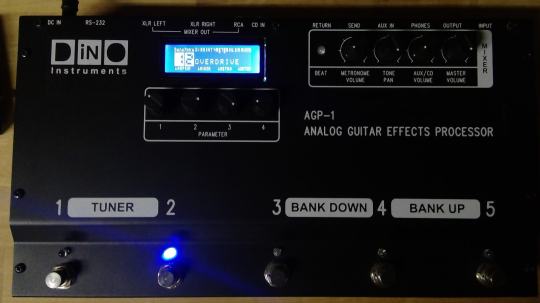




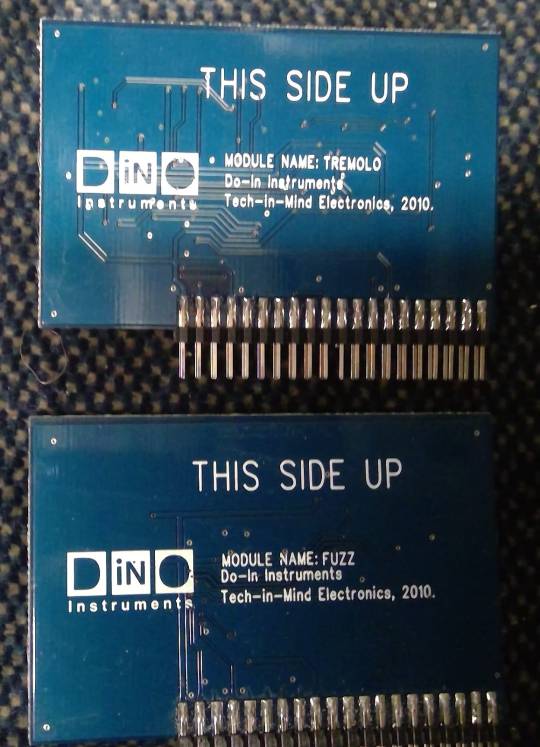

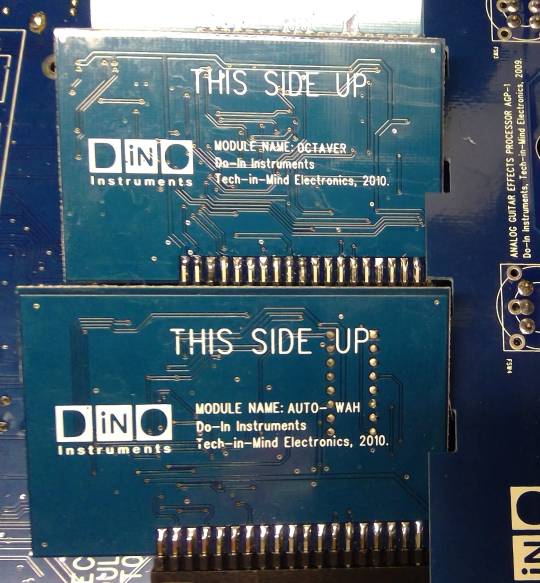
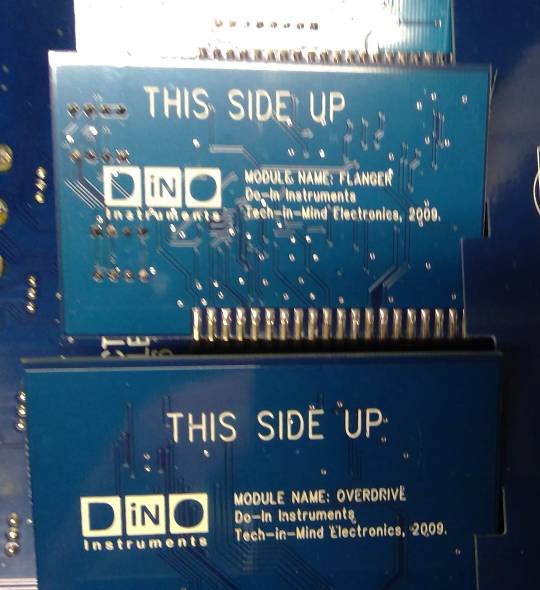

Tech-in Mind Electronics - Do-In Instruments - AGP-1 Analog Guitar Effects Processor, 2009
"This strange gem is an all analog signal path multi-Fx with 13 all analog effect modules plus 2 internal effects with digital control of all parameters. ...
This was the brainchild of a Hong Kong startup called Tech-in-Mind Electronics in 2009. The unit is called the AGP-1 (analog guitar processor 1).
The effect modules (my guesses as to what the circuit mimics):
Compressor/Noisegate (sounds like a Ross or MXR)
Phaser (sounds like a Phase 90)
Hot Distortion (Rat maybe)
Chorus (analog chorus, not a chorus connoisseur, so no clue what it is like)
Tremolo (solid state trem)
Fuzz (don’t know what flavor, but it is fuzzy)
Acoustic Simulator (sucks as an acoustic simulator, fun as a sound maker)
Metal Distortion (thicker and more high harmonics than Hot Distortion)
Octaver (tracks and sounds like a Boss octaver pedal)
Auto-wah (70’s flavored envelop filter sound)
Flanger (analog flanger, smooth and nice)
Overdrive (sounds like a Tube Screamer to me)
Delay/Echo/Reverb (The delay is gorgeous! It is as tasty as any analog delay that I have had (Memory Man and DOD). Not a reverb at all, but it is a legit bucket brigade analog delay. Enough delay time to get dotted 8th and quarter note delays depending on tempo. No idea what the millisecond time is.)
It also has two internal effects:
7-Band EQ (reasonably flexible)
Amp Sim (I compared this to a Tech 21 SansAmp classic and it sounded identical to a specific setting that was clean and warm)
Additional features:
Mixer with several inputs (see photos)
Metronome
Tuner (not the greatest, but works in a pinch. Headstock tuners put it to shame.)
The AGP-1 came along at the height of the DIY pedal building movement, and I would guess that many of the circuits that were popular among builders at the time were used for the modules.
The 10 modules can be moved around into different order in the 10 internal slots. It is a fussy business moving them around as each module has something like 30 pins on them that need to line up with the sockets in the main device.
...
Oh, and it has an RS-232 jack intended for firmware updates. It was rather dated in 2009. It is comical now! The company is long gone, so no firmware updates."
s. demo clip
A retro 80s version of the Devi Ever console?
s. more variable ciruit pedals
cred: reverb.com/Tim’s Gear Garage
17 notes
·
View notes
Text
my pedal board signal chain, explained
aka how i make those weird guitar sounds
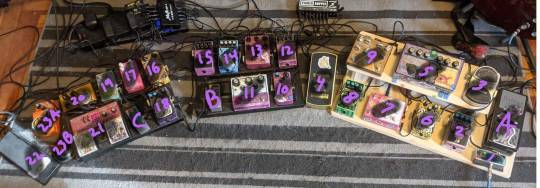
1. saturnworks kill switch (momentary)
stepping on this mutes the input from the guitar until it is released.
2. boss dd-3 (siegmeyer sticker)
set in hold mode so it will just repeat a short burst of sound over and over again as long as it's held down, useful for drones or writing harmonies.
3. tuner
cuts signal when engaged, acting as a latching kill switch, useful for tuning or changing guitars.
4. expression overdrive
lets me sweep back and forth between completely clean and boosted/overdriven, useful for beefing up distortions after it or gradually building gain.
5. weird combo pedal (mushroom sticker)
I'm like at least the third owner of it, don't know the original components but it's an analog delay pedal set to like slapjack almost reverb and a shitty distortion pedal housed together in one enclosure. each side can be turned on and off separately, and originally they had independent inputs and outputs but I wired them together so it's always delay into distortion. I love this pedal bc it's basically my big sound but in one box. distortion is almost a fuzz.
6. boss sd-1 (hyrule shield sticker)
first pedal I ever got, basic overdrive sound that's lighter than distortion, you can still play chords without getting too muddy.
7. rainbow machine
if you know what this is, you know what this is. weird pitch shifting delay that I use for both a barely-detuned lush chorus and intense acid trip sounds. pitch detune controlled by expression pedal A.
8. boss phaser (moon sticker)
slow rate for a gradual sweep. useful for sounding like pink floyd. good for clean parts.
9. joyo vision modulation (triforce sticker)
dual modulation, I use it for a lot of things, but mainly bitcrusher, octave up/down, and really fast rate chorus.
10. joyo us dream distortion
my favorite regular distortion / main pre-delay distortion. used for power chords or solos. I think the circuit is based off of suhr riot? idk it just sounds like what distortion should sound like. for alt rock or pop punk.
11. rubberneck delay
analog delay with rate adjust, good warm delay but also fun time stretchy pitch shifty sounds as you half or double the delay tempo. tap tempo set by pedal B, synced with dd-7 later in the chain.
12. boss bass overdrive (sparkly purple)
this is the heaviest shit you'll ever hear. fuzzy bass distortion that you feel in your bones. the downstairs neighbors probably hate this one.
13. joyo british sound
technically an amp sim, I use it for something kinda on the verge of drive and light distortion. different eq/tone than the sd-1 and the expression overdrive, but these three are the basics of my low-gain sound.
14. boss chorus
basic chorus set at a slow rate. I use this as my subtlest modulation pedal, just kinda thickening things out.
15. boss flanger
slow rate flange for that jet engine sound. layer over the phaser for ultimate modulation for underwater or spacey sounds.
16. joyo tremolo (painted lines, hamcat? sticker)
choppy trem. I'll adjust rate as needed but usually keep it choppy.
17. keeley realizer
set to soft focus mode. pretty intense mono reverb with modulation and delay. the reverb half of the keeley loomer pedal. when run after bitcrusher, makes for some fun synth sounds.
18. boss dd-7 (dark sun gwyndolin sticker)
main delay, second pedal I ever got. tap tempo set by pedal B and synced with the rubberneck but at a different tempo subdivision. mono signal splits into stereo here, with delays ping-ponging back and forth between left and right channel.
19. digitech polara
big shimmer stereo reverb that sounds like you are going to heaven. the opposite of subtle. massive on it's own, wall of sound when run into the distortions after it.
20. la lady stereo distortion
two distortions run in parallel, one for left channel and one for right channel. still messing around with the exact distortion mode I like best for each amp. for big distortion after delay/reverb sound.
21. boss looper
stereo loop pedal with two channels, lets me loop random shit over each other and save to play back later. mostly used for recording ideas as I'm practicing that I can revisit later, or building loops. controlled by foot switch C.
22. stereo volume pedal
can be used to completely cut off volume to amps, full volume, or anywhere in-between. for when I feel self conscious about bothering the neighbors. after this, stereo signal splits out to separate distortions and amps.
23. final end-chain distortion
23A takes the left channel from the stereo pedals, is a boss ds1 that goes to my vox amp. good classic distortion, had it for years.
23B toggles distortion channel on my fender amp, which is where the right channel from the stereo pedals goes.
I always turn these on or off together, big messy distortion after all the loops and delays for pure shoegaze wall of noise. love how the slightly different distortion sounds really emphasize the stereo field.
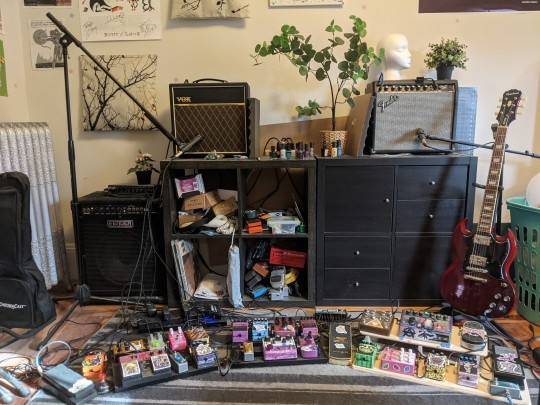

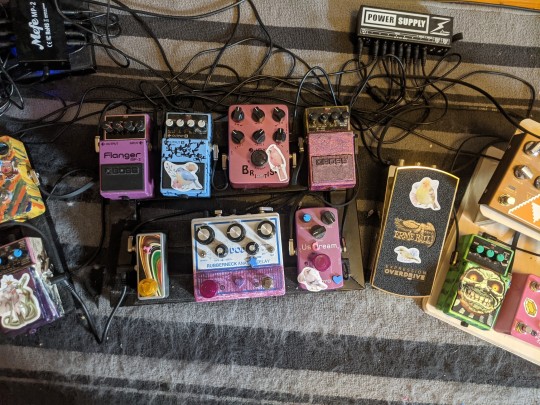
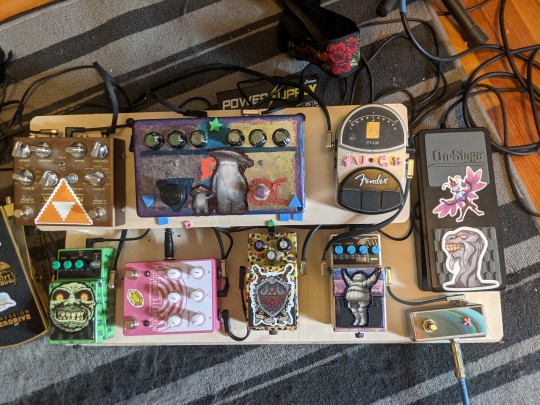
if you wanna hear it in action, listen to my sounds at
https://weepingwitch.bandcamp.com/
or
https://open.spotify.com/artist/3sU69CMxS64fB5ts48eeUw?si=pN_c8qyBTOGqTAsVFzkIWw
23 notes
·
View notes
Text
two separate takes of semi improvised guitar through a lofi octave up delay, through airtrash which is kinda a fuzz but also does weird tremolo stuff and other glitchiness, then recorded through a reverb through a drive, then the reverb tracks pitched down an octave in audacity
#tltoa#text chure#somehow on the end of the bass loop i got a werid squeaky toy sound that i could not determine the origin of#like i dont know where in my system it came from. i genuinely have no idea.#i love it its staying
4 notes
·
View notes
Photo

An infographic detailing the history of guitar effects, starting all the way back to the 1930s with Rickenbacker’s Vibrola Spanish Guitar and progressing to the present day. Along the way, we’ll see iconic guitar-effect breakthroughs like gain and reverb in the 1940s to 1950s’ effects like fuzz (discovered by accidentally dropping a Fender Bass amp on a rainy street!) and distortion (the fortuitous discovery when Link Wray stabbed a hole in his amp’s speaker). The guitar effects hit their stride in the 1960s with the first transistor-powered guitar pedals, including the first wah-wah pedals and the first octave effect pedal among glorious others. The explosion of effects pedals in the 1970s reverberates today: signal alterations, distortion, modulation, time-based effects, and filter effects. A timeline of all these effects along with the iconic musicians who used what—Bo Diddley’s Trem Trol 800 Tremolo, Jimi Hendrix’s Leslie rotating speaker, the Rolling Stones’ Maestro Fuzz Tone, etc.
All these will be highlighted by this infographic, courtesy of Songsimian.com.
#guitar effetcs#guitar history#amplifiers#effects pedal#willie kizert#watkins copicat#infographic#tremolo#vibrola#fender amp#bo diddly#chet atkins#diddley daddy#reverb box#distortion pedal#wah wah pedal#clyde mccoy#fuzz pedal#gibson gav1#les paul#jimi hendrix#johnny burnette#leslie speaker#motorized pulley system#rickenbacker
27 notes
·
View notes
Text
The gear behind Radiohead’s ‘Kid A’ sound in Dublin

Highlight: Jonny’s original ondes Martenot
Radiohead’s tour dates in 2000 were the first time that Jonny publicly performed with an ondes Martenot, and also one of the few tours he performed with the original 80s Martenot played on Kid A and Amnesiac. Although today Jonny is known for popularizing the ondes Martenot in the english-speaking world, until the late-90s he hadn’t so much as seen a picture of one. He only knew it from the sweet melodies and dramatic electronic glissandi in recordings of Olivier Messiaen’s Turangalîla-Symphony. It wasn’t until 1999, when he learned of one for sale in Paris and purchased it with its Palme diffuseur, that Jonny finally became acquainted with the instrument. This acquisition would be pivotal for the recording of Kid A and Amnesiac, and in no short time Jonny was teaching himself the instrument (hence his unusual playing technique) and using it to define the sound of those albums. The songs Kid A, The National Anthem, How to Disappear Completely, Optimistic, Motion Picture Soundtrack, Pyramid Song, You and Whose Army, and Morning Bell / Amnesiac all feature the ondes Martenot – and that doesn’t include the b-sides from this era!
What differentiates the Martenot from other electronic instruments is its interface, the way that the player controls the sound. The Martenot features a very sensitive button (called the “touche”) to control volume, while pitch can be controlled by either a keyboard or a ring on a ribbon. Both the keyboard and the ring can create vibrato by rocking the hand back and forth, and one can hear Jonny play with keyboard vibrato on the album recording of Optimistic. the ring has full control of pitch over the range of the instrument, allowing anything from minute microtones to mutli-octave slides. When using a simple waveform, sliding between notes using the ring creates a sound similar to a theremin – but with greater control – which is why Jonny is often mistaken for playing one on songs like The National Anthem and Pyramid Song.
The ondes Martenot’s sound generators changed over the decades, so different versions are capable of different timbres. While the earliest versions used vacuum tubes, and the version most common today uses transistors, Jonny’s original Martenot is from a briefly made digital version. The digital version uses additive synthesis, and Jonny generally plays with setting that has relatively few overtones, which is why it’s often mistaken for a sine wave. Although monophonic, the Martenot is capable not only of melody but also of many special effects – in fact, most people unwittingly know the Martenot from the soundtracks of films like Ghostbusters and Journey to the Far Side of the Sun.
The 2000 tour was also one of the few times that fans could hear songs performed with the same instrument used on the recordings, since Jonny quickly obtained a replica for touring purposes. Jonny was nervous about the rare Martenot being damaged, so he commissioned a replica that could control the same eurorack synth modules that he uses on Idioteque. The result was the Analogue Systems French Connection, a controller with a less sensitive interface emulating the touche and ring of the Martenot. Jonny would use the French Connection all Radiohead tours from 2001 to 2012, as well as for some recordings and tv performances. And although Jonny did tour with his original Martenot again in 2016 (he had less reason to be nervous of it breaking after getting an ondes Musicales Dierstein in 2011), that too was short lived, because Jonny ceased using the Martenot for touring once he acquired the Asaden Ondomo.
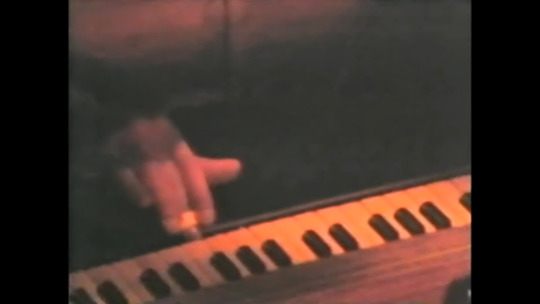
A closeup of Jonny’s ondes Martenot from The National Anthem. The Martenot’s distinctive short-depth (but full width) keys can be seen, as well as the pitch-controlling ring on Jonny’s finger.
Other notable bits:
Radiohead’s 2000 tour saw the first public uses of a ton of instruments that the band had only started using during the sessions for Kid A and Amnesiac. Perhaps most notably, it was the first time that Radiohead used looping and live sampling on tour. This was enabled by a host of performance oriented samplers, like the Korg Kaoss Pad, Line 6 DL4, and Akai Headrush, all of which were released only a year earlier in 1999. Colin bowed a double bass for the first time on Pyramid Song and Motion Picture Soundtrack – a rare treat, as Colin soon after switched to a Steinberger electric upright bass, followed in 2006 by Jonny taking over bowing on Pyramid Song with his guitar (most likely inspired by Jónsi of Sigur Ros, who opened for Radiohead on this very tour). Another rarity was the Vox Super Continental organ which Thom plays on Motion Picture Soundtrack, with the sound distorted through an Electro-Harmonix Micro Synthesizer pedal. Jonny brought his recently acquired Analogue Systems RS8000 on tour to perform Idioteque, marking the first time he’d performed with a eurorack modular synthesizer. It was also the first time Ed performed with a guitar modified to include a sustainer system. The heavily modified Eric Clapton Signature Stratocaster used for the Dublin show would be Ed’s favorite for more than a decade before becoming the inspiration for Ed’s current Fender EOB Signature Stratocaster.
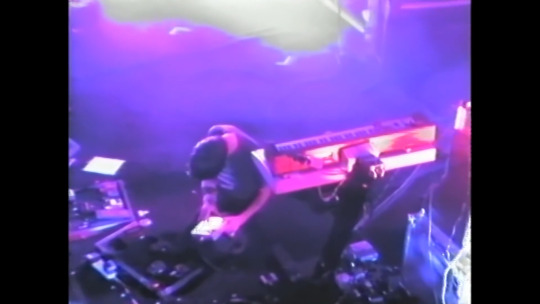
A screenshot of Jonny sampling Thom’s vocals with his Korg Kaoss Pad KP1 during Everything In Its Right Place. One can also see his ondes Martenot atop his Fatar MIDI control, and the Martenot’s Akai Headrush E1 (that light grey rectangle) can be seen below them both.
Song by song:
This lists all gear used for the songs included in the official video of Radiohead’s performance at the Punchestown Race Course in Dublin on October 7, 2000. It does not include other gear used for other songs at the same show, or for the rest of the 2000 tour.
The National Anthem
Thom Yorke‘s gear for The National Anthem in Dublin
Shure Beta 87 vocal microphone
Ring modulator vocal effect from FOH mixing desk
Rickenbacker 330 in Fireglo finish
Tech 21 XXL distortion (most likely, might be another distortion pedal)
Marshall Bluesbreaker amplifier
Jonny Greenwood‘s gear for The National Anthem in Dublin
ondes Martenot (80s digital student model)
Akai Headrush E1 delay/looper (used for Martenot looping)
Roberts R737 radio (processed by Jonny’s guitar pedals)
Electro-Harmonix Small Stone V2 phasor
DOD 440 envelope filter
Demeter The Tremulator tremolo
Digitech Whammy WH1 pitch shifter
BOSS SD1 overdrive
BOSS RV3 reverb/delay
Roland RE201 Space Echo
Vox Egg footswitch (echo cancel for Space Echo)
Ed O’Brien‘s gear for The National Anthem in Dublin
Fender Eric Clapton Signature Stratocaster (ST1) “Sustainer Strat”
Crowther Hotcake and/or BOSS SD1 overdrive
BOSS DD5 delay
BOSS RV3 reverb/delay
BOSS FV300 volume pedal
Vox AC30TBX Dave Petersen Special
Colin Greenwood‘s gear for The National Anthem in Dublin
1972 Fender Precision Bass in Olympic White finish
Lovetone Big Cheese fuzz
Alembic F-1X Tube Preamp
dbx 160A Compressor/Limiter
Gallien-Krueger 800rb amplifier head
Ampeg SVT 8x10 cabinet
Phil Selway - see end of article.

Jonny adjusting the frequency on his radio while adjusting a pedal (likely his Digitech Whammy) with his right foot.

Thom with his Fireglo Rickenbacker 330 during The National Anthem.
How To Disappear Completely
Thom Yorke‘s gear for How To Disappear Completely in Dublin
Shure Beta 87 vocal microphone
Lakewood M14 acoustic guitar
Jonny Greenwood‘s gear for How To Disappear Completely in Dublin
ondes Martenot (80s digital student model)
Akai Headrush E1 delay/looper (used for Martenot looping)
BOSS FV300 (used to mute Jonny’s playing for silent looping)
Ed O’Brien‘s gear for How To Disappear Completely in Dublin
Rickenbacker 360 12-String in Jetglo finish
Crowther Hotcake and/or BOSS SD1 overdrive
Digitech Whammy WH4 pitch shifter ?
Line 6 DL4 delay/looper (as looper) ?
BOSS DD5 delay
BOSS RV3 reverb/delay
BOSS FV300 volume pedal
Vox AC30TBX Dave Petersen Special amplifier
Colin Greenwood‘s gear for How To Disappear Completely in Dublin
1972 Fender Precision Bass in Olympic White finish
Alembic F-1X Tube Preamp
dbx 160A Compressor/Limiter
Gallien-Krueger 800rb amplifier head
Ampeg SVT 8x10 cabinet
Phil Selway‘s gear for How To Disappear Completely in Dublin
Lemon shaker

In this screenshot from How To Disappear Completely, one can see Ed’s Jetglo Rickenbacker 360/12 guitar and his BOSS PN-2 tremolo/pan pedal.
Morning Bell
Thom Yorke‘s gear for Morning Bell in Dublin
Shure Beta 87 vocal microphone
Rhodes Suitcase Piano Mark I 73 electric piano
Jonny Greenwood‘s gear for Morning Bell in Dublin
Fender Telecaster Plus V1 guitar in Tobacco Burst finish
Coin (an actual coin, scrapped against the guitar’s strings to create the sound effects at the end of the song)
Electro-Harmonix Small Stone V2 phaser
BOSS SD1 overdrive
Roland RE201 Space Echo
Vox Egg footswitch (echo cancel for Space Echo)
Vox AC30TB Dave Petersen Special amplifier
Ed O’Brien‘s gear for Morning Bell in Dublin
Shure Beta 87 vocal microphone
Fender Telecaster Standard guitar in white finish
Crowther Hotcake and/or BOSS SD1 overdrive
Line 6 DL4 delay/looper (as looper, using reverse function)
BOSS FV300 volume pedal
Vox AC30TB Dave Petersen Special amplifier
Colin Greenwood‘s gear for Morning Bell in Dublin
1972 Fender Precision Bass in Olympic White finish
Alembic F-1X Tube Preamp
dbx 160A Compressor/Limiter
Gallien-Krueger 800rb amplifier head
Ampeg SVT 8x10 cabinet
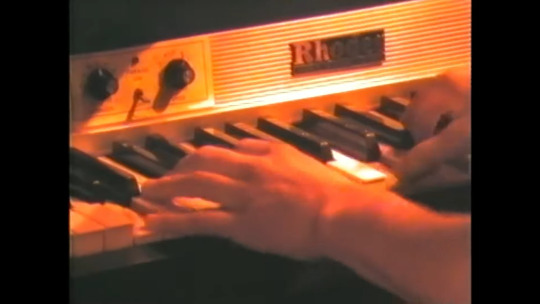
A closeup of Thom’s hands at the Rhodes piano during Morning Bell.
Idioteque
Thom Yorke‘s gear for Idioteque in Dublin
Shure Beta 87 vocal microphone
Jonny Greenwood‘s gear for Idioteque in Dublin
Analogue Systems Sequencer System in RS10 cabinet
Analogue Systems RS8000 Integrator modular synthesizer
Ed O’Brien‘s gear for Idioteque in Dublin
Metal percussion shaker (possibly a guiro shaker)
Fender Telecaste Standard guitar
Crowther Hotcake and/or BOSS SD1 overdrive
Lovetone Ring Stinger ?
Line 6 DL4 delay/looper (as looper)
BOSS DD5
BOSS FV300 volume pedal
Vox AC30TB Dave Petersen Special amplifier
Colin Greenwood‘s gear for Idioteque in Dublin
Yamaha CBX-K1XG keyboard (sends MIDI notes to a sampler)
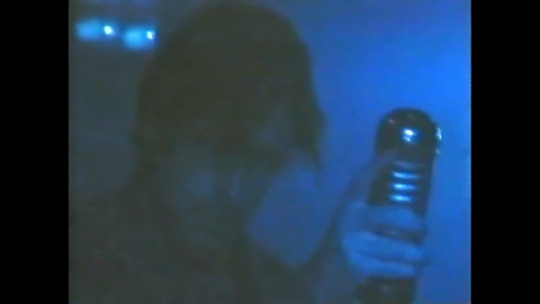
Ed with his metal shaker during Idioteque.

Colin triggering samples with the Yamaha CBX-K1XG during Idioteque.
Optimistic
Thom Yorke‘s gear for Optimistic in Dublin
Shure Beta 87 vocal microphone
Gibson ES-125 electric guitar
Marshall Bluesbreaker amplifier
Jonny Greenwood‘s gear for Optimistic in Dublin
Fender Starcaster guitar (vintage 1970s)
BOSS SD1 overdrive
Roland RE201 Space Echo
Vox Egg footswitch (echo cancel for Space Echo)
Vox AC30TB Dave Petersen Special amplifier
Ed O’Brien‘s gear for Optimistic in Dublin
Shure Beta 87 vocal microphone
Fender Telecaster Standard guitar in white finish
Crowther Hotcake and/or BOSS SD1 overdrive
Vox AC30TBX Dave Petersen Special amplifier
Colin Greenwood‘s gear for Optimistic in Dublin
1972 Fender Precision Bass in Olympic White finish
Alembic F-1X Tube Preamp
dbx 160A Compressor/Limiter
Gallien-Krueger 800rb amplifier hea
Ampeg SVT 8x10 cabinet

In this screenshot from Optimistic, Ed can be seen singing into a Shure Beta 87, while Jonny plays his 70s Fender Starcaster in the background.
In Limbo
Thom Yorke‘s gear for In Limbo in Dublin
Shure Beta 87 vocal microphone
Tambourine
Jonny Greenwood‘s gear for In Limbo in Dublin
Fender Starcaster guitar (vintage 1970s)
BOSS SD1 overdrive
Roland RE201 Space Echo
Vox Egg footswitch (echo cancel for Space Echo)
Vox AC30TB Dave Petersen Special amplifier
Ed O’Brien‘s gear for In Limbo in Dublin
Shure Beta 87 vocal microphone
Rhodes Suitcase Piano Mark I 73 electric piano
Colin Greenwood‘s gear for In Limbo in Dublin
1972 Fender Precision Bass in Olympic White finish
Alembic F-1X Tube Preamp
dbx 160A Compressor/Limiter
Gallien-Krueger 800rb amplifier head
Ampeg SVT 8x10 cabinet

Thom with his tambourine during In Limbo.

Thom at the Rhodes piano and Jonny with his Fender Telecaster and arm brace during In Limbo.
Paranoid Android
Thom Yorke‘s gear for Paranoid Android in Dublin
Shure Beta 87 vocal microphone
Lakewood M14 acoustic guitar
Jonny Greenwood‘s gear for Paranoid Android in Dublin
Shure Beta 87 vocal microphone (“ugly”, “piggy”)
Young Chang upright piano
Fatar CMS-61 MIDI controller (sends MIDI notes to trigger synth string samples)
Fender Telecaster Plus V1 guitar in Tobacco Burst finish
Electro-Harmonix Small Stone V2 phaser
DOD 440 envelope filter
BOSS LS2 line selector
Vox AC30TB Dave Petersen Special amplifier
Marshall Shredmaster distortion
BOSS FV300 volume pedal
Fender Eighty-Five amplifier
Ed O’Brien‘s gear for Paranoid Android in Dublin
Shure Beta 87 vocal microphone
Fender Telecaster Standard guitar in white finish
Crowther Hotcake and/or BOSS SD1 overdrive
Digitech Whammy WH4 pitch shifter
BOSS LS2 Line Selector
BOSS DD5 delay
Vox AC30TBX Dave Petersen Special amplifier
Mesa Boogie Trem-O-Verb amplifier
Colin Greenwood‘s gear for Paranoid Android in Dublin
1972 Fender Precision Bass in Olympic White finish
Alembic F-1X Tube Preamp
dbx 160A Compressor/Limiter
Gallien-Krueger 800rb amplifier head
Ampeg SVT 8x10 cabinet
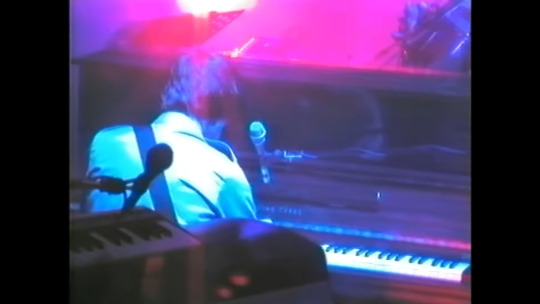
Jonny at the Young Chang upright piano during Paranoid Android – a rare instance of Jonny not using the Rhodes piano for this section.
Motion Picture Soundtrack
Thom Yorke‘s gear for Motion Picture Soundtrack in Dublin
Shure Beta 87 vocal microphone
Vox Super Continental organ
Electro-Harmonix Micro Synthesizer (vintage "big box" version used to distort the organ’s sound)
BSS Audio AR-133 Active D.I. Box (used to connect the pedal to the PA mixer)
Jonny Greenwood‘s gear for Motion Picture Soundtrack in Dublin
Fatar CMS-61 MIDI controller (sends MIDI notes to trigger harp and choir samples)
Colin Greenwood‘s gear for Motion Picture Soundtrack in Dublin
Double bass
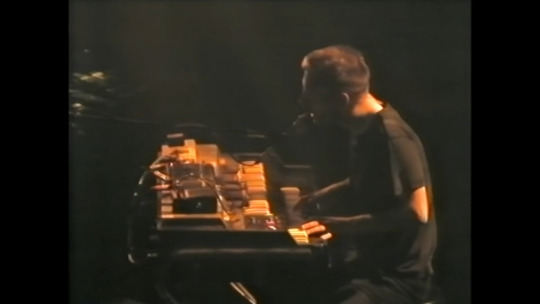
Thom playing the Vox Super Continental organ. The EHX Micro Synth and BSS Audio DI box can be seen on top of the organ, along with a power strip with power supplies.

Colin with his double bass and bow, presumably checking to ensure he has enough rosin and tension on the bow.
Everything In Its Right Place
Thom Yorke’s gear for Everything In Its Right Place in Dublin
Shure Beta 87 vocal microphone
Rhodes Suitcase Piano Mark I 73 electric piano
Jonny Greenwood’s gear for Everything In Its Right Place in Dublin
Korg Kaoss Pad KP1 sampler (fed from Thom’s vocals)
Electro-Harmonix Small Stone V2 phasor
DOD 440 envelope filter
Demeter The Tremulator tremolo
Digitech Whammy WH1 pitch shifter
BOSS SD1 overdrive
BOSS RV3 reverb/delay
Roland RE201 Space Echo
Vox Egg footswitch (echo cancel for Space Echo)
Ed O’Brien’s gear for Everything In Its Right Place
Pedals are fed from Thom’s Rhodes Piano.
Line 6 DL4 delay/looper (as looper)
Akai Headrush E1 delay/looper (as looper)
BOSS DD5 delay
BOSS FV300 volume pedal
misc others
Colin Greenwood‘s gear for Everything In Its Right Place in Dublin
1972 Fender Precision Bass in Olympic White finish
Alembic F-1X Tube Preamp
dbx 160A Compressor/Limiter
Gallien-Krueger 800rb amplifier head
Ampeg SVT 8x10 cabinet

A screenshot of Thom at the Rhodes piano during . One can also see the distinctive red control panel of Jonny’s Vox AC30TB Dave Petersen Special.
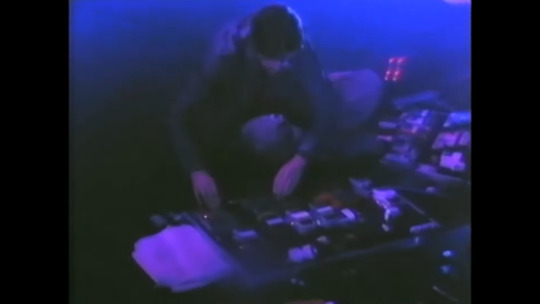
Ed adjusting his Line 6 DL4 and Akai Headrush E1 – both configured as loopers – during Everything In Its Right Place.

In this screenshot from Everything In Its Right Place, one can see Jonny’s 80s ondes Martenot and Fatar CMS-61 (left), as well as his BOSS SD1 and BOSS RV3 pedals (right).
Just
Thom Yorke‘s gear for Just in Dublin
Shure Beta 87 vocal microphone
Fender Telecaster Deluxe guitar (vintage 1970s)
Thom uses the guitar’s pickup selector as cutoff switch during outro section.
Proco Turbo Rat distortion (most likely, might be another dirt pedal)
Marshall Bluesbreaker amplifier
Jonny Greenwood‘s gear for Just in Dublin
Fender Telecaster Plus V1 guitar in Tobacco Burst finish
Electro-Harmonix Small Stone V2 phaser
DOD 440 envelope filter
Digitech Whammy WH1 pitch shifter
BOSS LS2 line selector
Vox AC30TB Dave Petersen Special amplifier
Marshall Shredmaster distortion
BOSS FV300 volume pedal
Fender Eighty-Five amplifier
Ed O’Brien‘s gear for Just in Dublin
Fender Stratocaster (70’s) in white finish with black pickguard
Crowther Hotcake and/or BOSS SD1
BOSS FV300 volume pedal
Mesa Boogie Trem-O-Verb amplifier
Colin Greenwood‘s gear for Just in Dublin
1972 Fender Precision Bass in Olympic White finish
Alembic F-1X Tube Preamp
dbx 160A Compressor/Limiter
Gallien-Krueger 800rb amplifier head

Ed can be seen with his white 70s Strat in this screenshot from Just.
Phil Selway’s Drum Setup
Phil’s drum kit is not especially visible in footage from the show. However, he described his setup at the time in the July, 2001 issue of Rhythm magazine:
“I don’t have my whole kit set up here today. I generally have 12”, 14” and 16” toms and a Noble & Cooley snare that I put on my left-hand side. I’d normally have drum triggers and a pad on the kit too, to the right of my 12” tom. The kick drum and both snares have triggers on – just for individual samples, because we don’t tend to use loops live.
“My acoustic drums are all premier Signia Marquis. They look after me really well and have done for six years – they sent me a Club kit recently, which I love. Cymbals are a mix of Zildjian Ks and As usually. I like quite dry cymbals – things that sound quite contained. It’s quite a simple set-up, really, and I don’t want for anything. Apart from snares. You can never have too many snares.”
The Zildjian K Cymbals are as follows:
13” Hi-Hats
12” Splash
15” Thin Crash
16” Crash
18” Ride
The triggers are by ddrum, and are used to control Phil’s Clavia Nord Drum 1.

Phil’s Nord Drum can be seen in this screenshot from Idioteque.
#Radiohead#Dublin#2000 tour#Thom Yorke#Jonny Greenwood#Ed O'Brien#Colin Greenwood#Phil Selway#Kid A#Amnesiac#The National Anthem#How To Disappear Completely#Morning Bell#Idioteque#Optimistic#In Limbo#Paranoid Android#Motion Picture Soundtrack#Everything In Its Right Place#Just#ondes Martenot#ondes Musicales#Ondomo#Pyramid Song#YoutubeStreams2020
18 notes
·
View notes
Text
Weekly overview (2023, week 07): 16 new brands and 34 new pedals
16 new brands
Ando Effects
AP Boutique
Audio Surplus Effects
Boulevard Effects
Daniel Pedals
Don-Kraft Effectors
Electric Eye Audio
Fowl Sounds
Giudis Pedals
Great Eastern FX
KarDiaN
Kinotone Audio
Rare Buzz Effects
Rhodium Electronics
SoundSlice FX
Wolf Devices
34 new effects
Boomer WF-24 8-Tr Fuzz Wah
Chorus TS-3 Tube Screamer
Colorsound Micro Mix
Copilot FX Arrow Airwaves Supreme
Cranetortoise SEL-1 A/B Box with Tuner Out
David Ross Musical Instruments Winter Storm
Davoli TSR/3 Tremolo / Sustain / Reverb
Dazatronyx THD Metal Distortion & Hybrid Germanium Fuzz
Dazatronyx TSX Overdrive
Death By Audio + EarthQuaker Devices Time Shadows
Deep Space Devices Boomburst
Devi Ever : CYMRU Godzilla
Donner Beltway Looper
Donner Path Seeker - ABY Switcher
Donner Triple Looper
Dr. Scientist Dusk - Analog Filter
DSM Noisemaker Sub Atomic - X-Over CMOS Bass Drive
Durham Electronics Quatro Plex
Ear Fuzz Effects Ear Bender MkI
EarthQuaker Devices Sunn O))) Life Pedal - Octave Distortion + Booster
Electro-Harmonix 5mm Power Amp
Electro-Harmonix EHX-2020 Mini Tuner Pedal
Electro-Harmonix Mini Slap-Back Echo - Analog Delay Reissue Pedal
Electro-Harmonix MOP-D10 Isolated Power Supply
Electro-Harmonix Nano Deluxe Memory Man
Electro-Harmonix Nano Eddy - Analog Vibrato/Chorus
Electro-Harmonix Nano Intelligent Harmony Machine - Harmonizer/Pitch Shifter
Electro-Harmonix Nano J Mascis Ram's Head Big Muff PI
Electro-Harmonix Nano Mainframe Bit Crusher
Electro-Harmonix Nano Operation Overlord - Nano Overdrive
Electro-Harmonix Triple Foot Controller
Fuzzrocious + Electro-Faustus EF110G Maggotor Gated Fuzz
Hall and Collins Signature Echo
nuX (Reissue series) Analog Chorus
1 new article
Last week's top 20 videos (2023, week 06)
Overviews of the previous weeks: https://www.effectsdatabase.com/updates/weekly
from Effects Database https://bit.ly/3lPsyjq
3 notes
·
View notes
Photo

Well done @terrencewells587 ! ・・・ Finally got my pedalboard arranged the way I want! So full, so flexible, so organized 😁 #pedalboards #pedalboard #pedalboardoftheday #pedalhaven #guitarpedals #guitarpedal #guitarfx #fxpedals #pedalnerds #notpedalbored #guitargear #effectpedals #effectspedals #guitarsounddesign #knowyourtone #fuzz #octave #compressor #vibrato #chorus #lowpassfilter #expressionpedal #lfo #delay #adenvelopegenerator #tremolo https://www.instagram.com/p/Bt4DJVen_DJ/?utm_source=ig_tumblr_share&igshid=1qav8t3rr50gc
#pedalboards#pedalboard#pedalboardoftheday#pedalhaven#guitarpedals#guitarpedal#guitarfx#fxpedals#pedalnerds#notpedalbored#guitargear#effectpedals#effectspedals#guitarsounddesign#knowyourtone#fuzz#octave#compressor#vibrato#chorus#lowpassfilter#expressionpedal#lfo#delay#adenvelopegenerator#tremolo
5 notes
·
View notes
Text
Reviews 138: Hatchback
Sam Grawe’s Hatchback project is a fantasy panorama of all the music I like most, weaving new age, krautrock, balearic, kosmische, and post-rock into heavenly tapestries that I could float on forever. But the project had been virtually silent since 2013’s incredible Marin County 12” on Adult Contemporary, leaving the world bereft of his soothing sonic meditations until a surprise appearance earlier this year on Cocktail d’Amore’s Iury Lech remix album. There Sam transformed “Posimeridiano” into a blissed out expanse of soft ambient propulsion and shimmering synth starscapes and now, building on the incredible strength of that remix, he has joined Lo Recordings once again for the much awaited third volume of his “California Cosmic Sound” series, Year of the Dragon. As usual, Scott Hirsch and Daniel Judd are along for the ride dropping golden waves of guitar alongside Sam’s cosmic vibrations, with Daniel in particular adding his Sorcerer sunshine to one of the coolest tracks I’ve heard in a long time, “Humidity Report 1976.” Elsewhere we get majestic new age soundscapes and tropical saxophone jams, as well as a stunning journey into the blinding light of climactic post-rock.
Hatchback - Year of the Dragon (Lo Recordings, 2018)
The centerpiece of “Evening Mountain” is the repeated appearance of thick and soul melting saxophone lines in the vein of Seahawks, which initially explore soft sauna jazz over cavernous reverb toms, flashes of hot static, and warm throbbing bass currents. Kick drums and splashy white noise cymbals evoke slow motion disco but when the full beat comes in, the vibe skews closer towards crashing and epic funk. The drums also sound double-tracked and with each layer slightly out of phase, creating the effect of colorful percussive tracers flying through the stereo field while an overflowing rainbow of synthesizer arps dances with LSD-soaked chime percolations and cosmic streaks of harmonious light panning back and forth. Towards the end, a searing space sequence overtakes the mix alongside droning angel choirs and the “topographic slide guitar” of Scott Hirsch, which dots the landscape with echoing bell tones and wailing solos, adding a naturalistic romanticism to the polychromatic synth euphoria. And as the track comes to a close, saxophones are smothered in deep space harmonizers while Sam’s squiggling synthesizer madness pushes everything towards some wild tropical landscape of alien colors and psychedelic visions.

“Onarimon” sets the spirit afloat on meditative bass currents while chiming e-pianos sound like drops of golden glowing liquid. Anthemic polysynths are transmuted into new age shimmer and celestial pads move around majestic washes of Manuel Göttshching-style spaceguitar (possibly sourced by Is it Balearic? alumnus Kensuke Saito/9dw, who is credited here with “neon halo guitar”). Arcing layers of distortion wash blissfully over the body and a hovering cloud of synthetic wind and kaleidoscopic feedback glows with warm sunset hues, while the starlight electric piano arpeggios continue to fade in and out of the mix. Gentle acid sequencing forms a sort of bass lullaby as the glorious guitars weave layers of lustrous light and eventually the acid bass is moved up a few octaves, now sounding like an otherworldly harp. Then a throbbing four-four beat emerges while cascading repetitions of twinkling minimalism build us towards a washed out climax wherein the aqueous guitars sing underwater songs of dolphins and whales and kosmische solos bubble up into the starry sky. Ever growing tremolo chords flow out to sea and shooting stars rain down and then morph into brain-piercing streaks of light and there is a spellbinding yet understated back and forth between delay soaked guitar riffs and pillow bass synths as Sam lets the sound layers grow into incandescent clouds of solar spiritual beauty.
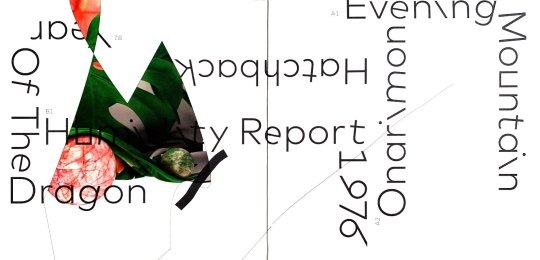
In “Humidity Report 1976”, aquamarine synths float alongside lush Rhodes melodies and outerspace sequences over clattering percussion and a building sense of rhythmic urgency. As the cymbals grow in strength and strange layers of sound threaten to overwhelm the mix, Sam and Dan drop us into a gloriously booty-shaking expanse of cosmic magic with perfectly placed claps sitting above a tight funk beat and interstellar synths and guitar arpeggios working in counterpoint to the dreamy e-piano ascents. Then we head into a gorgeous instrumental chorus with soft fusion synths weaving melodies of eternal prog romance over breaky lounge drums…like a soundtrack for fantasy kingdoms in the sky where shimmering light of all colors reflects off of every surface. And when we flash back to the body-moving funk jam, intergalactic synths now solo over thunderous bass waves and the guitars are smeared into blankets of solar flare fuzz. After a few more alternations between the smooth funk groove and the paradise fusion/prog chorus, we transition via a minimal jam of dusty MPC drums, tambourines, bouncing synthbass, and growing layers of dreamland keys into a new melodic world, one where the guitars build into a repetitive refrain of California coastal magic over a grooving ocean of positivity. And the track ends on a “Wish You Were Here” style AM radio cut-out, here joined by chirping crickets and other insect songs.
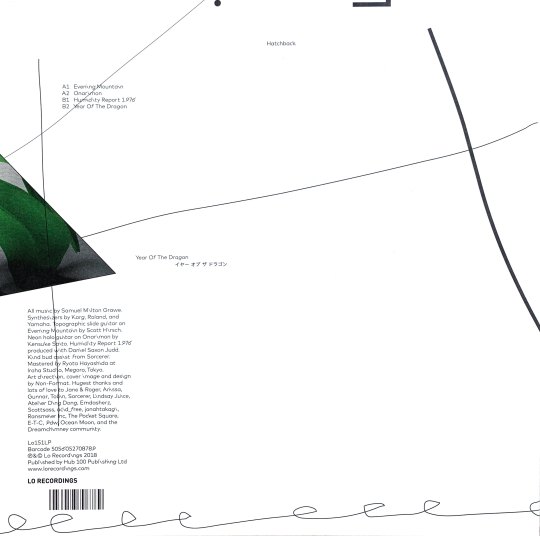
The introduction of “Year of the Dragon” surrounds piano chords that penetrate to the depths of the heart with aching slide guitars and a loose drum flow accented by sizzling hi-hats and island breeze bongos. The vibe is like riding through spaghetti western expanses on some faraway planet of peace and harmony, especially as e-pianos soaked in vibrato bathe the mind in a calming tropical light. At some point the song switches into a section dominated by spindly acoustic guitar riffing and gliding drumbeats, while hand drums continue adding colorful island wonder and mesmerizing arpeggios and electric guitar leads sweep everything into a triumphant drift. All the while, classical post-rock tremolo picked guitars ebb and flow in the background, building and building as the song progresses towards a soaring climax of overwhelming power, reminding me of nothing so much as Godspeed You Black Emperor!’s epic “BBF3,” only as if blasted into the balearic sunshine. Propulsive and explosive drums and chugging bass hypnotics underly the massive clouds of post-rock beauty as squelching acid synths diffuse through walls of hazy guitar brilliance. And after the drums back away for a celestial passage dominated by liquid six-string ambiance, we build back up for one more ecstatic rush through Sam’s starshine seascape before everything drops away, leaving just sparse piano chords to help the soul return to Earth.
(images from my personal copy)
#sam grawe#hatchback#sorcerer#daniel judd#scott hirsch#kensuke saito#9dw#lo recordings#dream chimney#california cosmic sound#balearic#krautrock#post-rock#new age#kosmische#seahawks#saxophone#topographic slide guitar#neon halo guitar#kindbud assist#album reviews#vinyl reviews#music reviews#vinyl#2018#sun lounge#octagon eyes
5 notes
·
View notes
Photo
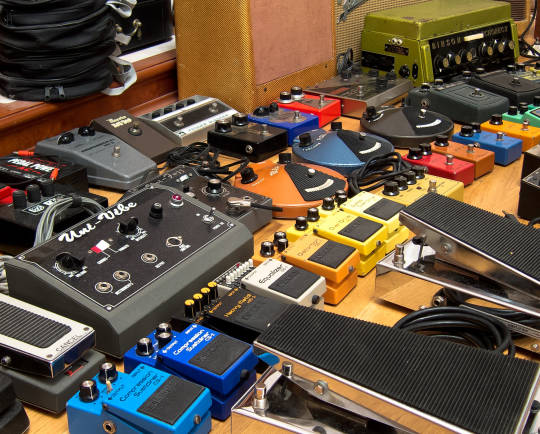
Soulman Vintage Museum
“... if you'll get some difficulties with some original stuff and you will want to look at it closely and at the guts too, my little museum has some info and especially a pics which probably could help.This is an about 125 pieces list below of units I got and most of them already shared on my Soulman Vintage Museum page: https://www.facebook.com/soulman.vintage Use the search and find what you wanted to look at when you need. Some pedals are still not shared but I suppose it will be done soon too. The list is keeping in the page description and I guess will be complemented:
Ace Tone FM-2 Fuzz Master '72
Ace Tone FM-3 Fuzz Master '74
ADA Flanger '77
Ampeg SC-1 Scrambler '69
Arbiter Fuzz Face NKT275 '67
Barcus-Berry 1330-1 Standard Pre-Amplifier '75
Barcus-Berry 1330-S Standard Pre-Amplifier '73
Binson Echorec 2 T7E '66
Boss CE-1 Chorus Ensemble '78
Boss CE-2 Chorus '79 8900
Boss CS-1 Compression Sustainer '78 7300
Boss CS-2 Compression Sustainer '84 382800
Boss DM-2 Delay '82 232700
Boss DS-1 Distortion '78 7600
Boss GE-7 Equalizer '82 202500
Boss GE-7 Equalizer '91 QD31138
Boss HM-2 Heavy Metal '83 371300
Boss OD-1 Over Drive '77 6500
Boss SD-1 Super Over Drive '81 078300
Clark SS-600 fuzz silicon '68
Conn ST-11 StroboTuner '78
Cry Baby Thomas Organ 95-910511 Stack of Dimes '77
Cry Baby Trash Can '60s rebuild
Cry Baby VOX Clyde McCoy pictured 1809 '67
Cry Baby VOX Clyde McCoy pictured 6779 '67
Dallas Arbiter Fuzz Face BC108C '72
Dallas Arbiter Trem Face '71
DeArmond 600 Volume Pedal '53
DeArmond 601 Tremolo Control '48
DigiTech WH1 Whammy Pedal '91
DOD Overdrive Preamp 250 '79
DOD Overdrive Preamp 250 upgraded to '77
Echoplex EP-1 468 '64
EHX Big Muff V1 Triangle '72
EHX Big Muff V2 Ram's Head '74
EHX Electric Mistress V2 '76
EHX Hot Tubes '78
EHX Memory Man Deluxe '79
EHX Small Clone EH 4600 Mini-Chorus '82
EHX Small Stone Phase Shifter '75
Expandora EXP-2000 Bixonic '95
Fender Blender '69
Fender Fuzz-Wah '69
Fender Reverb 6G15 '63
Foxx Tone Machine '70s
Gibson GA-4RE Reverb-Echo '66
Gibson Maestro BG-2 Boomer 2 8374 '68
Gibson Maestro FZ-1 Fuzz Tone 2612 '62
Gibson Maestro FZ-1A Fuzz Tone 14000 '66
Gretsch Controfuzz '73
HR Enver Distortion '02
HR Enver Fuzz '02
HR Enver Tube Screamer '02
HR SWC-2 Switcher-Comparer '18
Ibanez No.59 Standard Fuzz '74
Ibanez Overdrive OD-850 '75
Ibanez TS-9 Tube Screamer '84
Ibanez TS-9 Tube Screamer '95
Ibanez TS-808 Tube Screamer Overdrive Pro '80
Ibanez WH-10 wah '91
Klemt Echolette S NG51 '63
Klon Centaur 713 '94
Maxon D&S '76
Maxon D&S II '78
Maxon OD-9 Overdrive '81
Maxon OD-801 D&S '80
Maxon OD-808 Overdrive '79
Maxon OD-880 OverDrive Soft Distortion '76
Maxon ST-9 Super Tube Screamer '83
Morley MOD-ABY Switcher '80s
Morley MOD-AER Deluxe Analog Echo Reverb '82
Morley MOD-DDB Deluxe Distortion '80
Morley MOD-SCV Stereo Chorus Vibrato '81
Morley PWA Auto Wah '78
Morley PWF Power Wah Fuzz '75
Morley RFS-1 Footswitch '80s
Mosrite Fuzzrite V1 germ '66
Mosrite Fuzzrite V2 silicon '68
Mu-Tron III '74 with PS-1
Mu-Tron Octave Divider '77
Mu-Tron Phasor '75
Mu-Tron Phasor II '77
MXR Blue Box BUD '74
MXR Distortion + BUD '74
MXR Distortion II '82
MXR Dyna Comp BUD '74
MXR Micro Amp '80
MXR Phase 45 BUD '74
MXR Phase 90 BUD '74
MXR Phase 100 '75
Pro Co The Rat '82
Roger Mayer Fuzz Face '86
Roger Mayer Octavia '79
Roland AF-60 Bee Gee '75
Roland AS-1 Sustainer '76
Sam Ash Fuzzz Boxx '67
Schaller Fuzz germ '60s
Schaller Universal-Fußpedal '69
Shin Ei FY-2 Fuzz Box silicon '76
Shin Ei JAX Fuzz Wah FW-8 '73
Shin Ei Uni Fuzz '69
Shin Ei Uni Vibe '72
Shin Ei Univox Super-Fuzz U-1093 '60s
Shin Ei Univox Super-Fuzz U-1095 '72
Tone Bender Jumbo '76
Tone Bender MK4 '71
Tribute Buzzaround
Tribute Colorsound PowerBoost
Tribute Dallas Rangemaster Treble Booster
Tribute Fuzz Face NKT275
Tribute Marshall Supa Fuzz mk1
Tribute Marshall Supa Fuzz mk2
Tribute Octavio
Tribute Selmer Buzz Tone
Tribute Shatterbox
Tribute the Zonk Machine MK1
Tribute Tone Bender MK1 wooden box
Tribute Tone Bender MK1.5
Tribute Tone Bender MK2 Pro
Tribute Tone Bender MK3 Rotosound
Tribute WEM Pep Box
Tube Driver BK Butler '87
Tube Driver Chandler '88
Watkins Copicat mk2 '61
Yamaha MBD-20M Multiband Distortion '88 “
documeted in very clean pictures: /soulman.vintage/photos
cred: facebook.com/soulman.vintage
27 notes
·
View notes
Text
Triple Orchid - Songwriting (A)
My strategy plan for creating this song started off with a conceptual idea of blending together the elements of different genres that I enjoy the most. I knew I wanted the style to be abrasive, loud, heavy but also have a “shimmering” quality to it, with elements of grunge, industrial and either black metal or hardcore punk. I wanted to try and record everything as live audio rather than MIDI and the first step I chose was to start thinking of a guitar style and riff that I wanted to lead the song.
Here are some guitar orientated references:
Dive (Smart Sessions) – Nirvana
https://www.youtube.com/watch?v=LvHgvrM2LZc
I’ve always loved overdriven guitars with an added chorus effect and I think Kurt Cobain did this very well, it allows the guitars to sound full and vibrant with the shimmering quality that I was looking for. It also seems to create a distinct feeling as if there were multiple guitar tracks at one time.
Hey Mind Reader – The i.l.y’s
https://www.youtube.com/watch?v=XCqpaBNVIzY
This guitar also sounds very similar to what I was aiming for in terms of tone, although this one uses a fuzz effect instead of overdrive. I love how pummelling they sound with the crash cymbals. It pairs very well, creating an abrasive but somehow warm sound that I was hoping to create.
After settling on an idea for the guitar tone and effects, I started thinking of where to start with a riff. I knew power chords would be easy way to go but they sound far too weak in the standard way of playing them for this song, so instead I used a “fifth on the bottom” version of power chords which adds a far more intense or mean quality, I also used octave power chords which give the riff a feeling of precision and direction.
I spent about two to three days thinking of the riff without actually playing the guitar. To me this makes the creative process much easier when you have a specific direction of emotion you wish to convey. Once I pick up the guitar before being clear of what exactly it is that I’m trying to convey, I can quickly become distracted or frustrated due to the feeling of being unsure. So, at first the melody/riff was only in my head and then once I sat down to transfer it onto the guitar, it translated well. I decided that this first riff would work best as a verse which would be driving the composition.
I then made the intro by using the singular root notes from the verse while slightly changing the phrasing and using natural harmonics to help break up the riff which also added some build-up/intensity.
I then moved back to the verse to develop it further as I realised that it would become too tiresome, hearing the same variation looped. I used a lick to add flavour in some bars and some more natural harmonics in other bars; the timing of the natural harmonics ended up being useful for “stabs” from the drums and I realised this new variation of the verse riff could be considered a pre-chorus.
After listening to my progress a few times, I discussed where to take it from here with a good friend of mine (who also studies music) and we agreed that song needed some space to breathe in the chorus, not a tempo change but it needed a heavier phrasing for another riff. After the pre-chorus, I used more natural harmonics to ring out alone with lots of delay and tremolo, this let the song structure breathe while also building tension quickly and efficiently.
The new riff for the chorus incorporated more octave power chords than in the verse, this really helped me to break up the feeling of the song nicely and conveyed a sort of “mad” or “insane” feeling which I was looking for as a chorus.
Here’s a song reference that uses a similar technique during the chorus:
Why A Bitch Gotta Lie – Death Grips
(1:30 to 2:30)
https://www.youtube.com/watch?v=2TnXsZiBUCg
Next, I started recording the bass. It was difficult to decide on what kind of tone I wanted, first I went with a scooped bass but this sounded far too strong with the guitars warm overdrive - I suppose the frequencies were clashing. I then tried using a pick with the bass after turning up the treble from the amp settings and this seemed to suit the track well, sounding much grungier.
Now that I had a song structure down, (intro, verse, pre-chorus, chorus, verse, pre-chorus, chorus) it was time to start some ideas for the drums.
As I mentioned earlier, I really wanted to record everything as live audio. So far, I had been recording the guitar and bass through a Stealthplug interface on Logic at home. I have no electric drums here and so I had to record them through Pro Tools in the studio. I was unable to book the studio for a couple of weeks and so I used the time after my lessons in university to stay behind, set up the drum mics and attempt to record within the small amount of time I had before the next lessons started. This did not go well, my friend recorded me as I attempted to play to the best of my abilities through the full song in one take within half an hour and due to the stress of the time plus having no practice, this session was rendered useless.
I immediately decided to record MIDI drums back on Logic. I had already considered this because I had become aware that time was short in terms of recording in the studio – so luckily, I did have some ideas already although the song would feel very different this way but this wasn’t necessarily a bad thing. The live drums were going to be very fast and intense, giving the song a more punk feeling but I did originally want a more industrial quality so either way I would’ve been satisfied.
I used standard Logic plugins for each drum track. For the kick drum I went for the “After Party” drum machine and for all other drum tracks I used the “Dropkick” drum machine.
The kick drum alone sounds very “hip hop” orientated which initially wouldn’t have been ideal for what I had in mind, but after hearing it within the mix it sounded very prominent and punchy which seemed to work surprisingly well.
Here’s a song reference that incorporated the kick drum in a similar way:
The Power That B – Death Grips
(0:18)
https://www.youtube.com/watch?v=wVSHMKizsgg
For the snare drum, I wanted a clap but one that wasn’t too artificial sounding. I achieved this by using two different clap snares, one towards a high frequency one towards a low frequency. These doubled on top of each other somehow seemed to give me a more natural sounding clap snare in my opinion. They also have a small amount of reverb and delay.
Here’s a song reference that incorporated the snare drum in a similar way:
Pss Pss – Death Grips
(0:16)
https://www.youtube.com/watch?v=e0QhxF4OmhQ
For the toms I used and acoustic drum plugin, this helped to increase the more natural side of the MIDI drums. As for the cymbals, I used both the crash and ride very often with a fair amount of long reverb added to them, which gave the drums enough space to not feel claustrophobic.
Once the MIDI drums were finished, I still wanted to stick my original drum idea and try recording the live drums. I managed to book a rehearsal room for a few hours and so I brought a handheld recorder with me in an attempt to record myself. I knew the end result wouldn’t have anywhere near as much clarity as a recording room would, but it didn’t turn out so bad. The main issue was that I placed my recorder a little too close to the ride cymbal and so it picked up a lot of those higher frequencies over everything else. Once I transferred it onto Logic, I did a lot of editing and tried my best to equalise the frequencies.
The last part of the songwriting process was to start writing some lyrics. This isn’t something that I do often, the last time I had written lyrics was nearly a full year ago. I wasn’t sure where to begin or what my subject matter would be but I did have in mind two particular styles that I could go with, one being more blackmetal/hardcore orientated and the other being a very aggressive style of rap. The first step I chose was to start voicing the way I would phrase the voice over the music, this allowed me to have an idea of where and how syllables would be placed within the song.
Originally I was going to look at other lyrics from songs that I like for inspiration and possibly use a selection of words that stand out from different songs and string them together in my own way (with my own original content of course) but then I had a suggestion from a friend. She said I should have a look at some poetry from Sylvia Plath who’s career spanned from the 1940’s to the 1960’s. Her poetry has a lot of dark subject matter that would include
“death, blood, hospitals, skulls, fetuses and the moon.” https://en.wikipedia.org/wiki/Sylvia_Plath
Although very talented, she had a very troubled life and took her own life at the age of 30.
After reading some of her poems, I decided to take inspiration directly from
“The Fever 103.”
https://www.poetryfoundation.org/articles/68911/sylvia-plath-fever-103
I love the dark concept of this poem, it seems to incorporate war, monsters from hell and the pure innocence of nature. In order to derive inspiration from this, I picked out a few words that I liked most and tried to make my own story out of them by stringing them together my own original content.
I was going to ask my friend to record vocals for me as I have never tried performing vocals by myself before, I’ve worked with him in the past so I knew we could communicate with ease but he became too busy and ended up losing his voice just in time for us to record, in this case I took it upon myself to record them myself. I didn’t have a studio to work in and so I simply used the microphone built into my laptop at home. Performing the vocals was a very new feeling for me, I did my best to replicate what I had in mind and it turned out surprisingly well in my opinion. The built in microphone naturally added some distortion to my voice due to the low quality and actually seemed to work quite nicely.
I added some reverb, delay and a graphic equaliser to my vocals and after some tweaking they sounded ideal for my first try at recording my own voice.
Here are my lyrics:
[Verse]
Tendon tongues, Dull as a triple,
Forced like a wheezing, The tinder wont cry,
[Pre-Chorus]
Yellow swollen smokes, Make your own fright,
Yellow swollen smokes, Make your own right,
Low smokes roll, Make your own like,
Low smokes roll, Make them roll right,
[Bridge]
Fuck,
[Chorus]
Choke the caged and weak, Orchid in its creek, Hang the garden from your sleeves and raise it not like meek,
Choke the caged and sleek, Orchid in its creek, Hang the garden from your sleeves and raise it not like weak,
0 notes